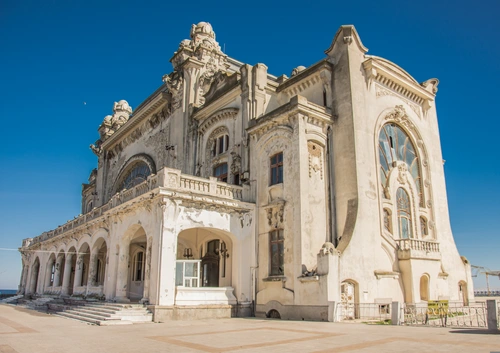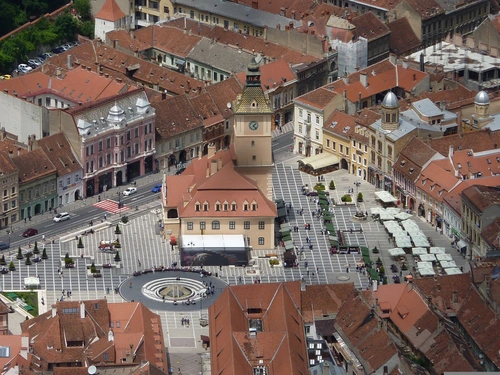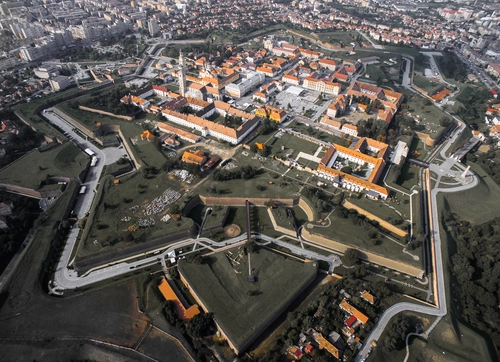Europe
Romania
Romania, a country full of history and legends, where the old is now meeting the new. Known for the Carpathian Mountains, Transylvania famous for Dracula and Bran Castle, medieval towns like Brasov, Sibiu and its vibrant capital, Bucharest. Beautiful natural landscapes from wild beaches of the Black Sea to high mountains.
Frequently asked questions

Sucevita
Sucevita is a commune located in Suceava County, northeastern Romania. It is famous for its Painted church, a UNESCO World Heritage site. Located near the stunning Carpathian mountains, Sucevita is a haven for nature lovers and culture enthusiasts.

Craiova
Craiova, Romania's 6th largest city and capital of Dolj County, is situated near the east bank of the river Jiu in central Oltenia. It is a longstanding political center, and is located at approximately equal distances from the Southern Carpathians (north) and the River Danube (south). Craiova is the chief commercial city west of Bucharest and the most important city of Oltenia. The city prospered as a regional trading centre despite an earthquake in 1790, a plague in 1795, and a Turkish assault in 1802 during which it was burned.

Apuseni Mountains
The Apuseni Mountains are a popular tourist attraction offering stunning landscapes, fascinating cave systems, and isolated, traditional villages. The region is also a paradise for outdoor enthusiasts - hiking, climbing, biking, or skiing, whatever your preference, you'll find it here. The Apuseni best embody the idea of serene, slow-paced living, providing a window into the rural life of old Romania.

Peles Castle
Peles Castle, one of the most stunning castles in Europe, sits in the Carpathian Mountains near Sinaia, in Romania. Built by King Carol I, the castle is a unique blend of Neo-Renaissance and Gothic Revival styles. The interior is just as impressive, with over 170 rooms filled with priceless European art, Murano crystal chandeliers, heavy drapes, and intricately carved woodwork.

Sibiu
Sibiu is a city in Transylvania, Romania, with a rich history dating back to the 12th century when it was founded by German settlers. The city is known for its well-preserved medieval buildings, such as the Brukenthal Palace which houses one of Europe's oldest museums. Sibiu also boasts the Council Tower which offers panoramic city views.

Sighisoara
Known for its well-preserved medieval town and birthplace of Vlad III the Impaler, who inspired Bram Stoker's Dracula, Sighisoara is a must-visit when in Romania. The city's hillsides are lined with colourful houses, churches and fortifications built by the Saxons in the 12th century.

Transfagarasan Highway
Known as Ceausescu's Folly, the Transfagarasan Highway is the second highest paved road in Romania. It offers breathtaking views of the Fagaras Mountains and has been dubbed the 'Road to the Sky', 'Road to the Clouds', and even 'Best Driving Road in the World' by Top Gear.

Piatra Craiului Mountains
Piatra Craiului Mountains are a mountain range in the Southern Carpathians in Romania. It's a popular destination for hiking, climbing, skiing, and photography, boasting over 300 flora species and numerous fauna species.

Medias
Medias is located in the geographical center of Romania. This medieval city is known for its well-preserved fortifications and the archaic charm of its old buildings. Wine is an integral part of Medias’ identity, which you can explore via the local Wine Festival.

Constanta
Constanta is a charming city on the Black Sea coast, known for its sandy beaches, historical treasures, and vibrant nightlife. As one of the largest ports in Europe, its maritime economy plays a significant role. The Old Town is rich with Roman and Byzantine history dating back to the 7th century BC when it was known as Tomis.

Retezat Mountains
A jewel of nature in Romania, the Retezat Mountains are one of the highest mountain ranges in the country. They are part of the Southern Carpathians and are famous worldwide for their mythical scenery, composed of dense forests, crystal-clear azure glacier lakes, and wildlife diversity. Perfect for trekking, hiking, and even winter sports, they can offer a revitalizing encounter with untouched wilderness.

Biertan
Biertan is a commune in central Romania. It's an idyllic small village tucked away in the rolling hills of the Transylvania region. Boasting an impressive fortified church, Biertan is an UNESCO World Heritage Site famous for its medieval charm and heritage.

Oradea
Oradea is a charming Romanian city located on the Crisul Repede River's banks. It comprises elegant Baroque architecture, the Art Nouveau architectural style, thermal spas, and parks. Its rich history and relaxed vibes make it a must-visit destination.

Sturdza Castle
The Sturdza Castle is a fairy-tale-like, Neo-Gothic castle located in Miclauseni, Romania. Containing around 60 rooms, it was built by George Sturdza and his wife Maria in the late 19th century. The extensive gardens surrounding the castle offer an attractive escape.

Danube Delta
The Danube Delta is one of the most biodiverse places on earth, housing over 5,500 species of flora and fauna. A UNESCO Biosphere Reserve and a major bird sanctuaries in Europe, it spreads over an area of 344,6 hectares and is extended in parts of Ukraine and Romania.

Bran
Bran is a commune situated near Brasov in Transylvania, Romania. It's famed for its architectural jewel - the Bran Castle, often associated with the legend of Dracula, making it a popular tourist destination.

Vama Veche
Vama Veche is a small village located on the Black Sea coast in eastern Romania. It's renowned for its distinctive, bohemian atmosphere and the open-minded, free-spirit vibe that thrives in the multitude of beach bars and clubs. The village is a popular destination for domestic and foreign tourists, seeking a more non-commercial, 'hippie' style sea resort.

Turda
Turda, a city in Cluj County, Romania, is renowned for its salt mines. Displaying a rich history dating back to the Roman Empire, this small town is an interesting stop for those traveling between the major cities of Transylvania. The Turda Salt Mine is one of the most visited museums in Romania. Turda has a charming small town centre with Baroque buildings and ruins.

Brasov
Brasov is a city in the Transylvania region of Romania, ringed by the Carpathian Mountains. It's known for its medieval Saxon walls and the towering Gothic-style Black Church. In the nearby council square, the baroque Brasov County Museum of History houses local artifacts.

Alba Iulia
Alba Iulia is a city in the Transylvania region of Romania. With a rich history going back to Roman times, it's most known for the Alba Carolina Fortress, a star-shaped fortress filled with Roman Catholic churches and museums. Don't miss the Union Hall, the place where the act of unification of Transylvania with Romania was signed in 1918. And just nearby, lies the fascinating Batthyaneum Library, built in an old baroque church.

Hunedoara
Hunedoara is a city in Transylvania, Romania, known for the spectacular Corvin Castle, a Gothic-Renaissance architectural masterpiece. It's a city laden with history, from the ancient Dacian civilization to the Medieval times, offering diverse attractions for the curious traveler.

Bucharest
Bucharest is the bustling capital city of Romania. It is known for its iconic landmarks, including the imposing Palace of Parliament, the historic Old Town, and the beautiful Herastrau Park. Its vibrant nightlife, diverse architecture reflecting historical influences, and rich cultural scene make it an intriguing destination for visitors.

Decebal's Statue
Engraved in the rock of a mountain and looming over the waters of the Danube, the Statue of Decebalus is the tallest rock relief in Europe. It depicts Decebalus, the last king of Dacia, who fought against the Roman emperors Domitian and Trajan to preserve the independence of his country, which corresponded to modern Romania. The monument was made between 1994 and 2004, on an initiative from businessman Iosif Constantin Drăgan.

Timișoara
Timișoara is a city in western Romania, known for Secessionist architecture. The central square, Piața Victoriei, is surrounded by baroque buildings and the Metropolitan Cathedral, with its mosaic of scenes from the War of Independence. Nearby is the Memorial Museum of the 1989 Revolution, displaying personal belongings of protesters.

Cluj-Napoca
Cluj-Napoca, commonly known as Cluj, is the fourth most populous city in Romania, and the seat of Cluj County in the northwestern part of the country. It is considered the unofficial capital to the historical province of Transylvania. The city is rich with culture and history, its numerous landmarks and monuments conserving a part of Romania's national heritage.





